|
Diseases of Poultry
By Ivan Dinev, DVM, PhD
|
PARATYPHOID INFECTIONS
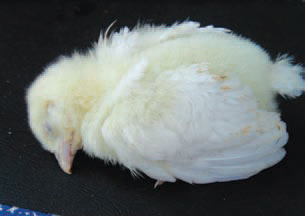
53. Fowl paratyphoid is an acute or chronic disease in domestic fowl and many other avian or mammalian species, caused by some motile Salmonella serotypes that are not host-specific. The highest morbidity and death rates are usually observed during the first 2 weeks after hatching. The chickens are drowsy, with eyes closed, ruffled feathers and grouped near the sources of heat.
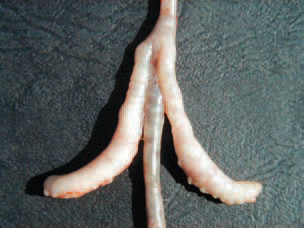
54. Diarrhoea, dehydration and pasted down appearance around the vent are observed. Pathoana-tomically, marked catarrhal haemorrhagic enteritis is observed. Often the caeca are filled with gelatinous, fibrinous, cheese-like exudate. This is a finding, characteristic for salmonellosis, but it is not specific for any of serotypes.
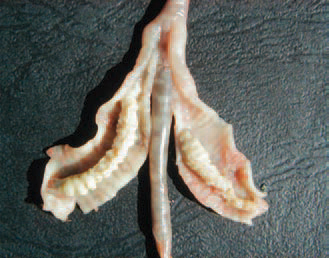
55. The inflammatory fibrinous exudate in caeca often forms casts with the shape of mucosal folds. The aetiological agents are about 10 - 15 Salmonella serotypes and the most common isolates are S. Enteritidis and 5. Typhimurium. Most fowl paratyphoid organisms contain an endotoxin, responsible for their pathogenic effects.
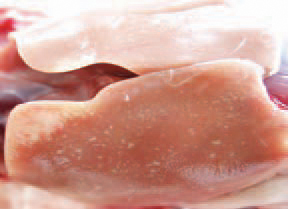
56. . Sometimes, necrotic foci in the liver are discovered. The infection of small chickens occurs by penetration of microorganisms into the egg after faecal contamination. The transmission of agents could be done also by a contaminated source of animal protein (meat and bone meal etc.). The rodents are a significant reservoir of paratyphoid microorganisms. The treatment inhibits but does not eradicate the infection. The appropriate treatment minimizes the death rate until the birds develop immunity.
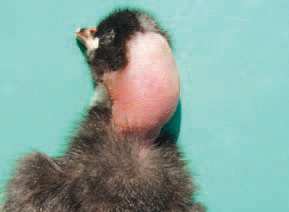
57. . P. aeruginosa infection via a contaminated injectable Marek's vaccine. About 24h after the vaccination, nervous signs are appearing: incoordination, ataxia, unilateral lameness (if the vaccination is manual). Automatically vaccinated chickens exhibit subcutaneous oedemas in the region of the neck, sometimes involving the head.
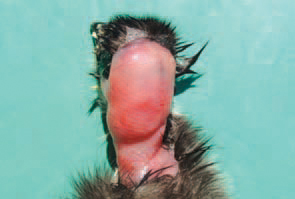
58. The overlying skin is often macerated and the down-fallen and easily detached with the superficial epidermal layer. Most commonly, the Pseudomonas infection originates from hatcheries.
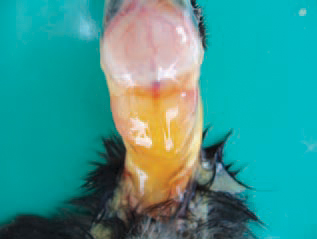
59. Subcutaneously, serous or haemorrhagic oedemas are detected. P. aeruginosa is a motile. Gram-negative, non-sporing rod. The microorganism is an aerobe, grows on ordinary bacteriological media and produces a green pigment composed by fluorescein & pyocyanin that has a characteristic fruity odour.

60. A subcutaneous haemorrhagic oedema in the region of the neck about the site of MD vaccine application. P. aeruginosa is widely distributed in the soil, water and the environment. The high humidity favours its development. Susceptible avian species are chickens, turkeys, pheasants, ducks, goose, ostriches and exotic birds.
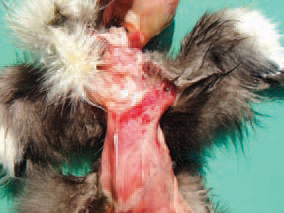
61. Sometimes, subcutaneous haemorrhages in the muscles are present
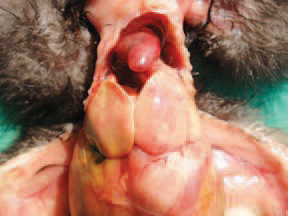
62 In the liver, hyperaemia, subcapsular haemorrhages and dystrophy are detected.
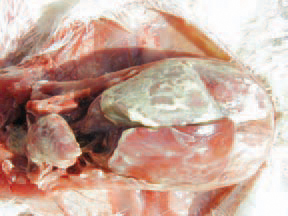
63.Acute septicaemic P. aeruginosa infection. Serofibrinous inflammation of serous membranes in the pleuroperitoneal cavity (aerosacculitis, pericarditis, and perihepatitis) is detected. The lesions strongly resemble (imitate) these observed in E. coli septicaemia
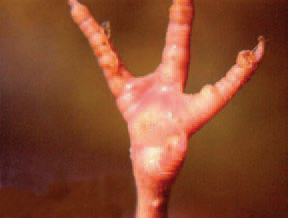
64. Local P. aeruginosa infections. They are encountered secondary to septicaemia or independently. Pododermatitis and inflamed footpad are usually observed in broilers at the age of 7 -14 days.
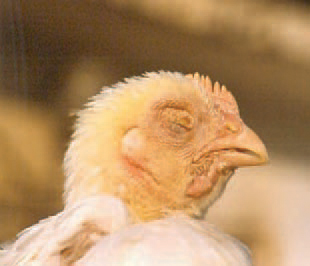
65. Other local forms of P. aeruginosa infection are conjunctivites and consequent keratites and panophthalmrtes
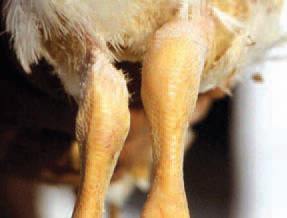
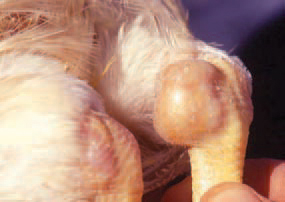
66. 67. Arthrrtes and periarthrites are encountered in broilers as well as in growing birds. Tibiotarsal joints are most commonly affected. The skin and the mucous coats are the entrance door of the infection. The prevention is based upon detection and elimination of the causative agent. The strict hygiene in hatcheries and throughout the injection of birds is essential for the prevention of Pseudomonas infection. The test of isolates1 sensitivity is of most importance for the treatment, because the microorganism is resistant to a high number of antimicrobial drugs.






